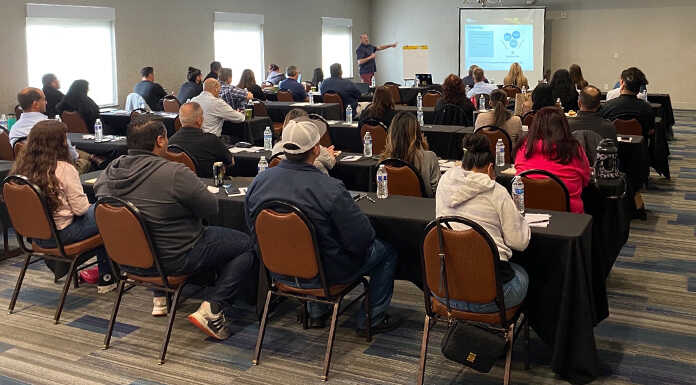Recently ICW Group held symposiums with workers’ compensation policyholders to guide them on building a culture of safety in their respective organizations. The symposiums focused on the vital role management plays in the safety of all employees and the tools they can use to identify, plan for, and mitigate the risks their workforce faces.
ICW Group’s VP, Risk Management, Rick Fineman, and Risk Management Manager, Jason Rozar led the symposiums held with Northern and Southern California policyholders.
“A culture of safety starts at the top,” said Rozer during his session titled Risk Management for Managers. “Managers are responsible for the safety and health of others, making risk management a vital part of every manager’s job, at every organizational level.”
Here are some of the key takeaways from the discussions that you can apply to your organization.
- Take the time to develop trust with your employees. Some may not feel comfortable asking questions. You as a manager have to educate your team members on what the expectations and safety protocols are on day one. If you don’t have time to train a new employee correctly on day one, how do you think things will go moving forward?
- Get to know the learning style of those you manage – Safety protocols need to be taught, so training is an essential part of a manager’s job. Understanding the varying learning styles of your team members increases the effectiveness of your risk management program. You may be required to customize your training approach for some, which takes more time. Considering that safety in some work environments is a matter of life and limb, it’s worth it.
- Formally evaluate your workplace risks. You’re not going to eliminate risk, that’s a given. What you can do is plan for those risks and develop the appropriate hazard controls. When designing your safety program, create risk management goals that you can measure. We encourage our policyholders to follow these steps:
- Identify all loss exposures in your workplace
- Evaluate each exposure individually
- Develop a plan to address your exposures
- Implement your plan
- Monitor and track results
- Your risk management program is active and constantly evolving. It’s not a one-and-done. You don’t want to wait until something drastic happens to evaluate and adjust your prevention plans.
- Decide what is acceptable versus unacceptable risks for your organization. Organizations establish its level of acceptable risk. And recognize every one of your workers have different levels of acceptable risks. Your challenge is to get them to develop your organization’s risk model.
- Utilize your work comp carrier’s risk management expertise – ICW Group policyholders have access to one-on-one safety consultations and risk assessments. We also provide access to 1000s of safety resources and tools with our online learning management system Safety OnDemand and bi-weekly live safety training webinars on various topics. If you’re not a policyholder, find out what your work comp carrier offers and utilize their resources to enhance your safety program. You are not alone.
A final thought we like to share with our policyholder customers…
Follow the three E’s of safety management:
- Education – Train your employees properly.
- Environmental controls – Work environment exposures need to be controlled. Be sure to change, correct and evaluate your workplace safety program.
- Enforcement – Enforce your risk management program as you do all other policies & programs.
“Safety is about coming home every evening and embracing your family and friends. It’s about quality of life. Helping workplaces understand this significance and equipping them with the tools they need to keep their workforce safe is why we’re here.”
Rick Fineman, VP, Risk Management, ICW Group

















